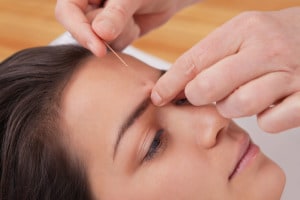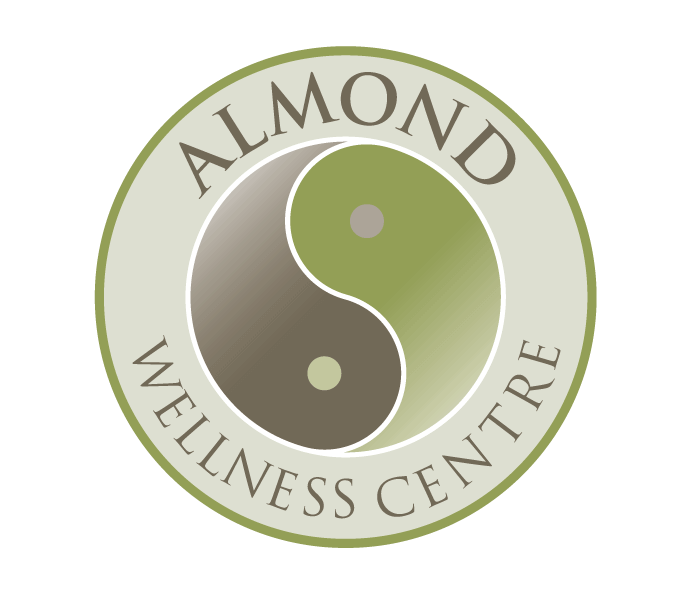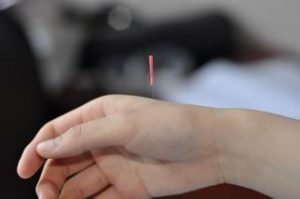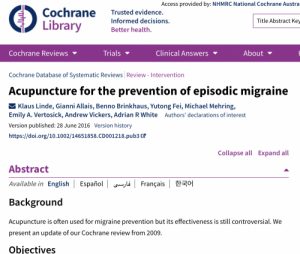Migraine Chinese medicine acupuncture

Causes
The exact cause of migraines is not fully understood. However, they are believed to involve a combination of genetic, environmental, and neurological factors. Some common triggers for migraines include hormonal changes (such as during menstruation), certain foods or food additives, stress, lack of sleep, sensory stimuli (bright lights, loud noises), physical exertion, weather changes, and specific medications.
Symptoms
Migraine symptoms can vary from person to person and between episodes. They typically occur in phases and may include:
Headache: The headache phase is characterised by moderate to severe pulsating or throbbing pain, typically on one side of the head. The pain can last for a few hours to several days and may worsen with physical activity. It is often accompanied by other symptoms like nausea, vomiting, sensitivity to light (photophobia), and sensitivity to sound (phonophobia).
While migraines are commonly associated with severe headaches, acephalgic migraines are characterized by other migraine symptoms without the headache component. Some individuals may experience prodromal symptoms (early warning signs), aura, and postdromal symptoms, similar to migraines with headaches. Migraine without headache, also known as “acephalgic migraine” or “silent migraine”
Prodrome: Some individuals experience warning signs before the onset of a migraine attack, such as mood changes, food cravings, increased thirst, or increased urination.
Aura (not always present): About one-fourth of migraine sufferers experience auras, which are usually visual disturbances that precede or accompany the headache. Auras can include seeing flashing lights, zigzag lines, or temporary vision loss. Other sensory disturbances or language difficulties may also occur.
Postdrome: Following the headache phase, individuals may experience a postdrome period, where they feel drained, fatigued, and may have difficulty concentrating or experience mood changes.
Treatment
The treatment of migraines aims to relieve symptoms during an acute attack and prevent future episodes. Here are some common approaches:
Acute treatment: Over-the-counter pain relievers (such as ibuprofen or acetaminophen) can help relieve mild to moderate migraines. For more severe migraines, triptans (prescription medications) are often used to constrict blood vessels and alleviate pain. Anti-nausea medications may also be prescribed to manage associated symptoms.
Preventive treatment: If migraines are frequent or significantly impact daily life, preventive medications may be recommended. These medications include beta-blockers, antidepressants, antiepileptic drugs, and Botox injections. Lifestyle modifications, such as managing stress, maintaining a regular sleep schedule, avoiding trigger factors, and adopting relaxation techniques, may also help reduce the frequency and severity of migraines.
Complementary therapies: Some individuals find relief from migraines through complementary therapies, such as acupuncture, Chinese herbal medicine, biofeedback, cognitive-behavioral therapy, or supplements. These approaches can be used alongside conventional treatments but should be discussed with a healthcare professional.
Acupuncture and migraine

Several studies have been conducted to evaluate its effectiveness of acupuncture for migraines. Based on the available evidence, acupuncture can be a valuable option for individuals with migraines. The treatment may help reduce the frequency and severity of migraines, alleviate associated symptoms, and improve overall well-being.
A review of 22 trials involving 4,985 people found that acupuncture reduced the frequency of migraine episodes. In trials where acupuncture was added to usual care, it resulted in a significant reduction in headache frequency compared to usual care alone. When acupuncture was compared to “Sham” acupuncture, the true acupuncture group had a higher rate of halving headache frequency.
Acupuncture was also found to be similarly effective as prophylactic drugs in reducing migraine frequency. Side effects were minimal, and dropout rates were lower compared to drug treatments.
(Cochrane, D. J. (2016). Acupuncture as a treatment for migraine: A systematic review and meta-analysis of randomised controlled trials. The Journal of Headache and Pain, 17(1), 1-9. )
Common acupuncture points used for migraine
In acupuncture, specific points on the body are selected for the treatment of migraines. The selection of acupuncture points can vary depending on the individual and the practitioner’s approach. However, here are some commonly used acupuncture points for migraines:
- Yintang (Extra Point): Located between the eyebrows, in the indentation where the bridge of the nose meets the forehead. This point is often used for headache relief, including migraines, and helps to calm the mind.
- Baihui (GV20): Located on the top of the head, in the midline, about halfway between the hairline and the top of the head. Baihui is believed to regulate the flow of Qi (energy) in the body and can be used for various conditions, including migraines.
- Taiyang (EX-HN5): Found in the temporal region, in the depression about one centimeter behind the midpoint between the outer corner of the eye and the top of the ear. This point is commonly used for headache relief, including migraines.
- Fengchi (GB20): Situated at the base of the skull, in the hollows between the two vertical neck muscles. GB20 is frequently used for headaches, including migraines, and
acupuncture on hegu LI4
is believed to help relieve tension and promote the flow of Qi.
- Hegu (LI4): Located on the back of the hand, in the webbing between the thumb and index finger. Hegu is a versatile acupuncture point used for various conditions, including headaches and pain relief. It is believed to help regulate the flow of Qi and promote relaxation.
These are just a few examples of acupuncture points commonly used for migraines. A qualified registered acupuncturist will assess your condition, take into account your specific symptoms and overall health, and determine the most appropriate combination of acupuncture points for your individual needs.
Chinese herbal medicine and migraine
Chinese herbal medicine is a branch of traditional Chinese medicine that utilises various herbs and natural substances to promote health and address specific conditions, including migraines. The aim of Chinese herbal medicine is to restore balance and harmony within the body.
In the context of migraines, Chinese herbal medicine takes a holistic approach by considering the individual’s overall constitution and specific symptoms. Herbal formulas are typically customised to the person’s unique pattern of disharmony, which can vary from person to person. It’s important to consult with a qualified Chinese medicine practitioner who can conduct a thorough evaluation and recommend appropriate herbal treatments.
Commonly used herbs in Chinese herbal medicine for migraines:
- Chuan Xiong (Ligusticum chuanxiong): Known as Szechuan lovage root, Chuan Xiong is commonly used in Chinese herbal formulas for migraines. It is believed to promote blood circulation and relieve pain.
- Bai Zhi (Angelica dahurica): Also called Dahurian Angelica root, Bai Zhi is believed to have anti-inflammatory and analgesic properties. It is often used for migraines accompanied by sinus congestion or nasal congestion.
- Gao Ben (Ligusticum sinense): Gao Ben, also known as Chinese lovage root, is used in Chinese herbal medicine to alleviate migraines and relieve pain. It is thought to promote the circulation of Qi and blood.
- Bo He (Mentha haplocalyx): Bo He, or Chinese mint, has cooling properties and is often used in herbal formulas for migraines associated with heat or symptoms such as irritability and restlessness.
- Xia Ku Cao (Prunella vulgaris): Xia Ku Cao, also called Selfheal spike, is believed to have a calming and sedating effect. It is often used for migraines accompanied by dizziness or blurred vision.
It’s important to note that Chinese herbal medicine is a complex and specialised field. The selection and combination of herbs in a formula are tailored to the individual’s specific needs and may vary from person to person. The dosage and duration of treatment will also depend on various factors.
Each individual responses to acupuncture and Chinese herbal medicine varies. If you suffer from migraines, it is advisable to consult with a healthcare professional who can provide a comprehensive evaluation, offer appropriate treatment options, and help you manage your condition effectively.
Almond Wellness Centre Coburg and Ringwood clinics
Almond Wellness Centre located in Victoria’s Coburg and Ringwood area, is a multidisciplinary clinic dedicated to promoting wellness. Whether you are in search of treatment for a particular health issue such as fertility IVF support or aiming to enhance your overall well-being, we are dedicated to delivering personalised care tailored to your needs. Our goal is to assist you in achieving your health objectives and supporting your journey towards optimal wellness.
As each person is different, if you or someone you care about is experiencing migraine headache and would like to explore the potential benefits of Chinese medicine acupuncture, please don’t hesitate to contact us. Our fully qualified registered acupuncture Chinese medicine practitioners in both Coburg clinic and Ringwood clinic are here to provide information and assistance. We will assess your specific condition, take into account your medical history, and develop a treatment plan tailored to your needs.
Researches
Several research studies have been conducted to evaluate the effectiveness of acupuncture for migraines. Here are a few notable studies:
- Linde, K., Allais, G., Brinkhaus, B., Manheimer, E., Vickers, A., & White, A. (2009). Acupuncture for migraine prophylaxis. The Cochrane Database of Systematic Reviews, (1), CD001218. This systematic review analyzed data from 22 randomized controlled trials involving over 4,000 participants. The study concluded that acupuncture is effective in reducing the frequency of migraines compared to no treatment or routine care. However, the effect size was modest, and the long-term benefits and optimal treatment parameters remained uncertain.
- Cochrane, D. J. (2016). Acupuncture as a treatment for migraine: A systematic review and meta-analysis of randomized controlled trials. The Journal of Headache and Pain, 17(1), 1-9. This meta-analysis examined 22 randomized controlled trials involving nearly 5,000 participants. The results suggested that acupuncture is superior to both sham acupuncture and conventional migraine treatments in reducing migraine frequency. However, the quality of evidence was generally low, and more high-quality studies were recommended.
- Wang, L. P., Zhang, X. Z., Guo, J., Liu, H. L., Zhang, Y., Liu, C. Z., & Wang, L. (2017). Efficacy of acupuncture for migraine prophylaxis: A single-blinded, double-dummy, randomized controlled trial. Pain, 158(10), 1864-1871. In this study, 249 participants were randomly assigned to receive acupuncture, sham acupuncture, or flunarizine (a conventional migraine prophylactic medication). The results showed that acupuncture was superior to sham acupuncture and had similar effectiveness to flunarizine in reducing migraine frequency and intensity.
It is important to note that while some studies have shown positive effects of acupuncture for migraines, the overall evidence is still considered limited and further high-quality research is needed to provide more conclusive findings.
More to read:
Why most acupuncture researches are low quality
Why double-blind, placebo-controlled trials for acupuncture are difficult even impossible


 Based on the available evidence, acupuncture can be a valuable option for individuals with migraines.
Based on the available evidence, acupuncture can be a valuable option for individuals with migraines.